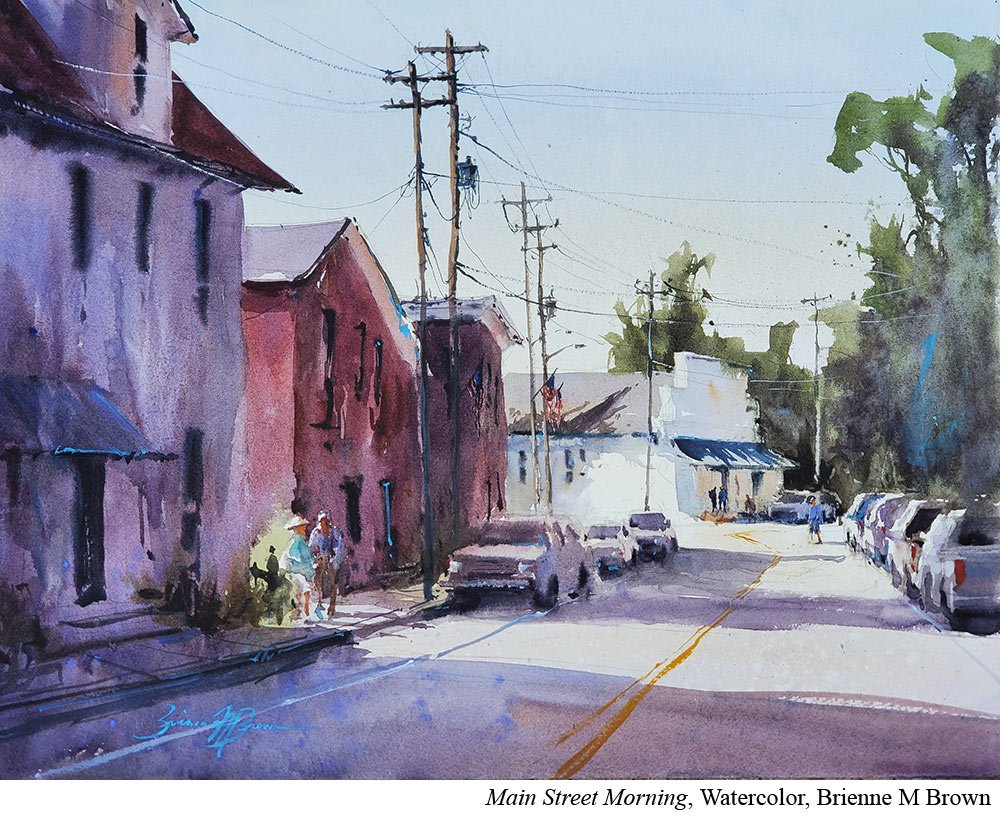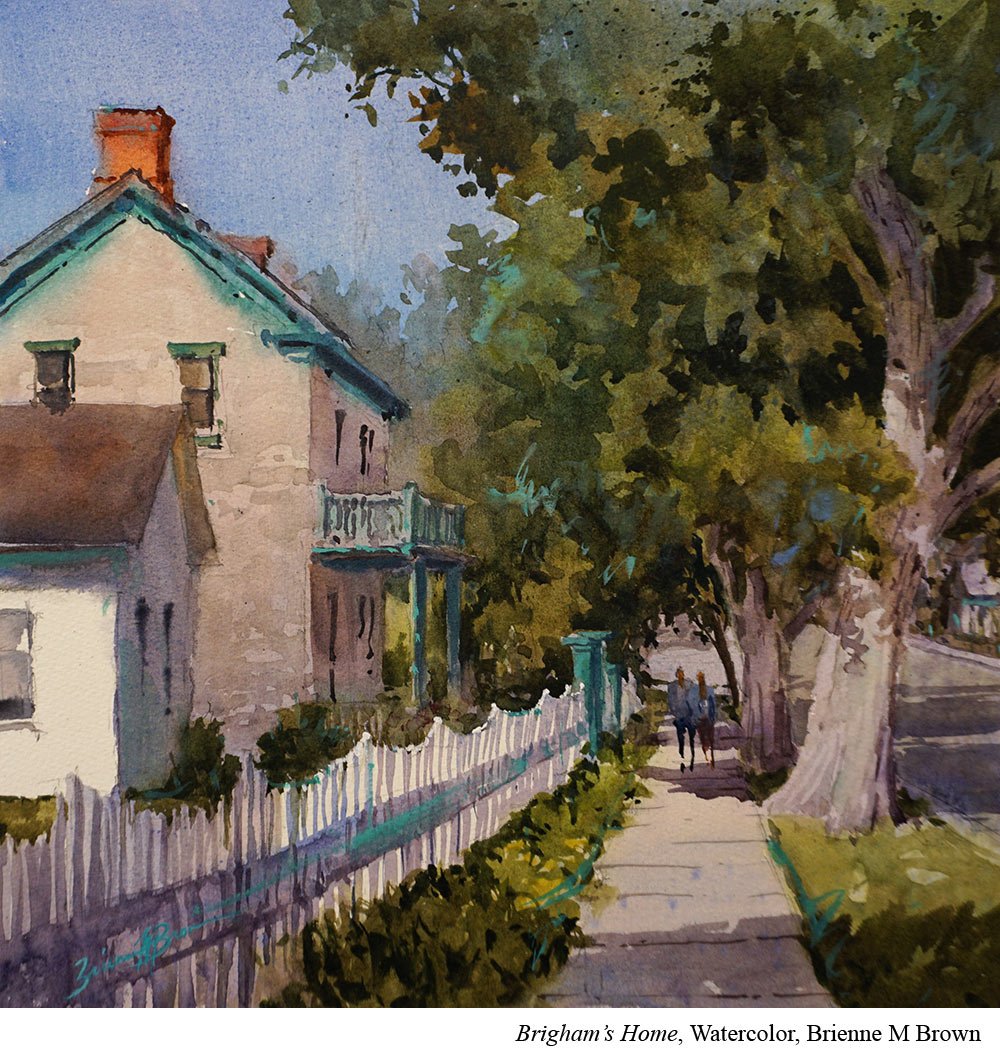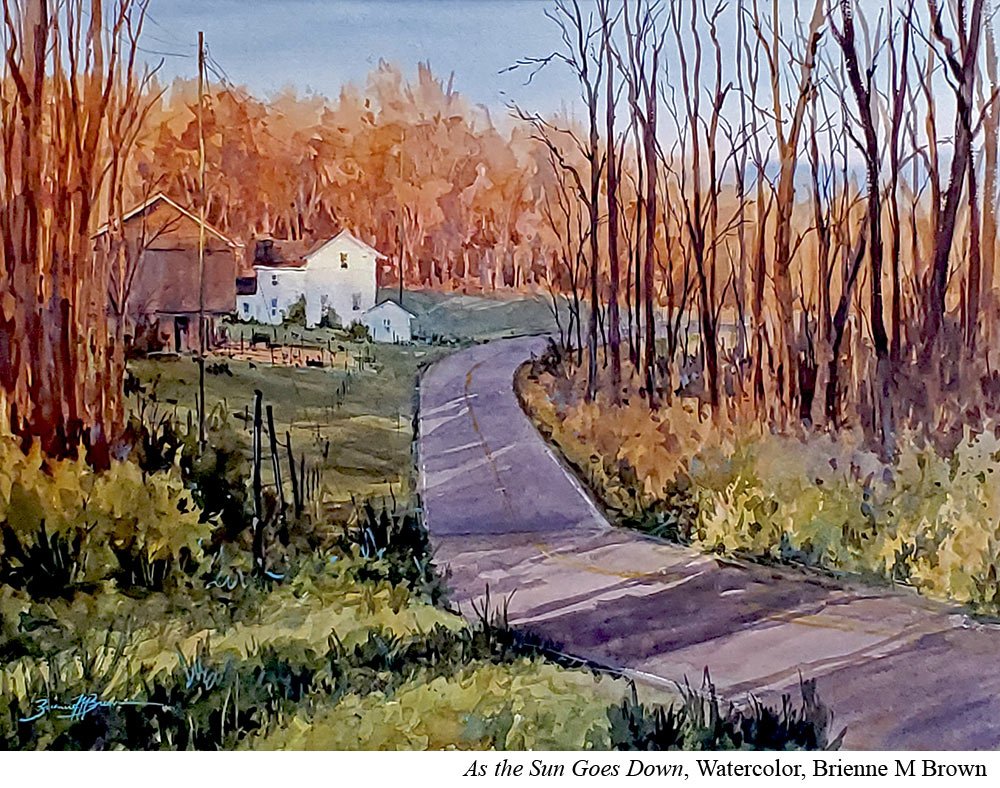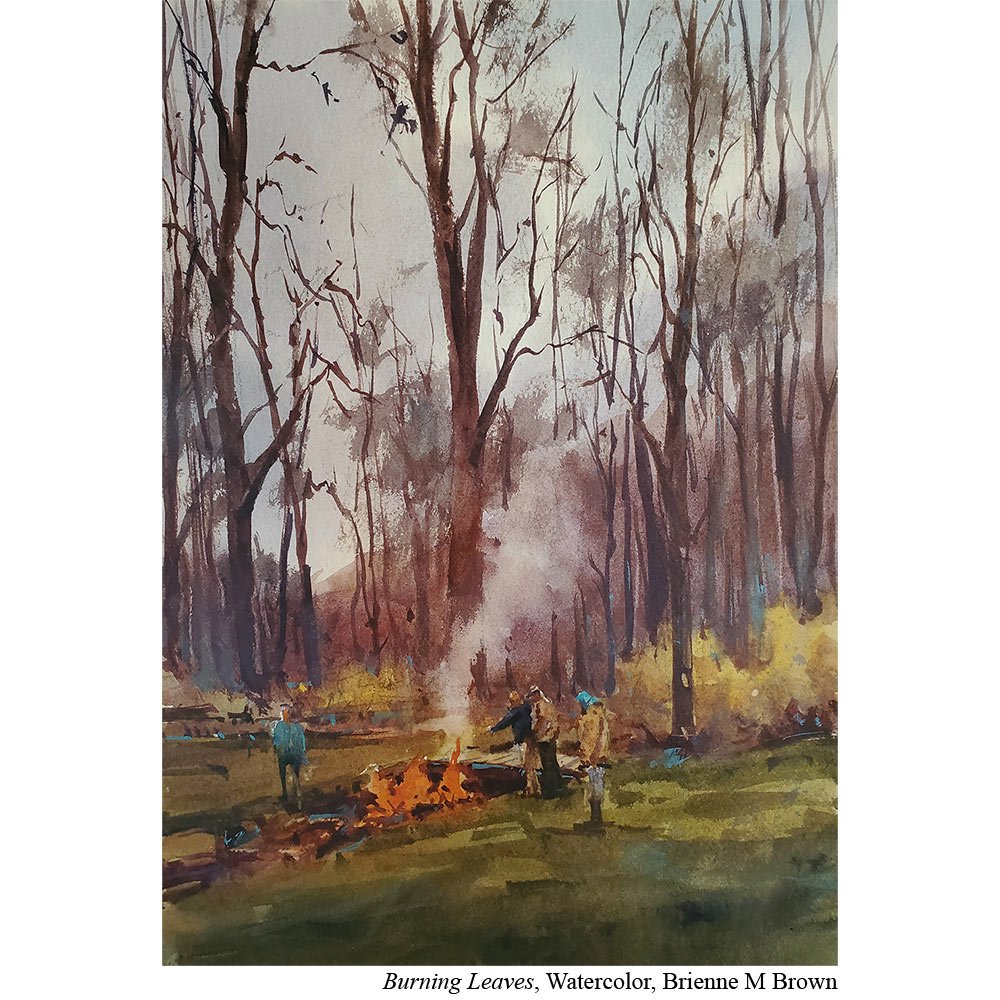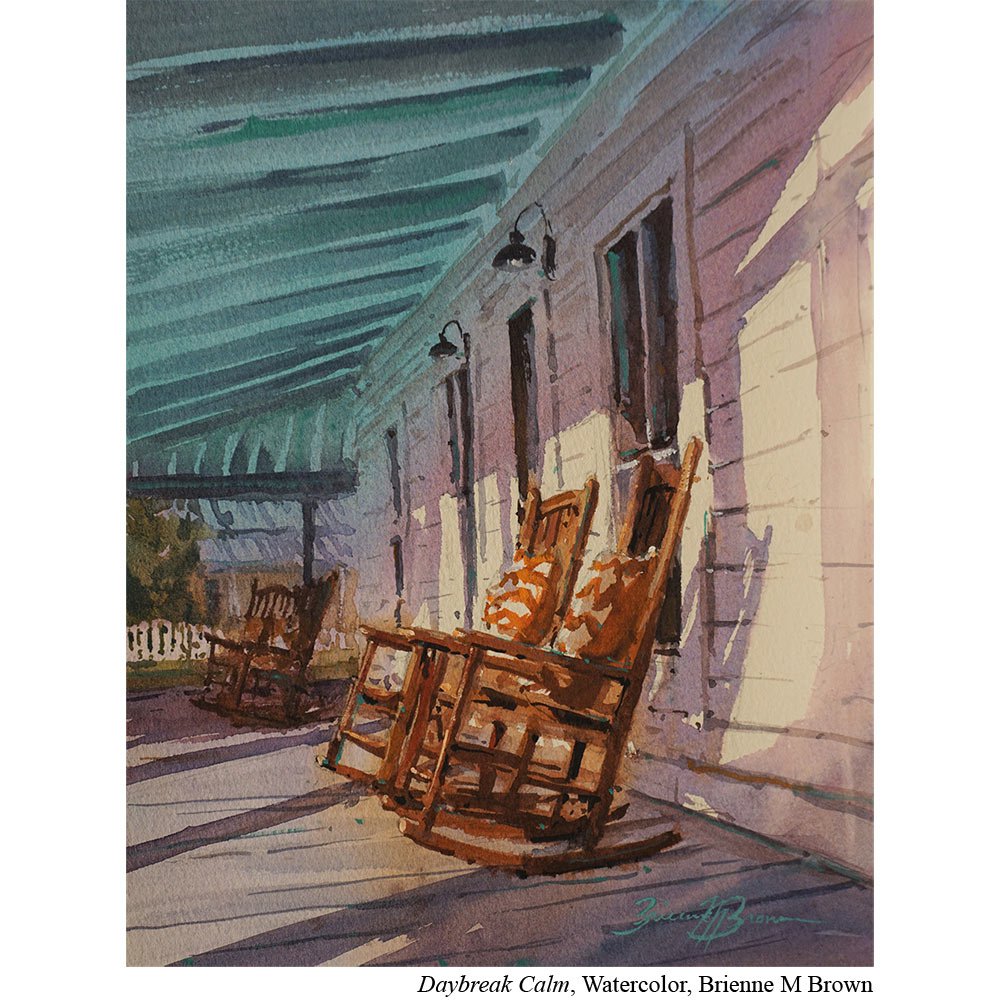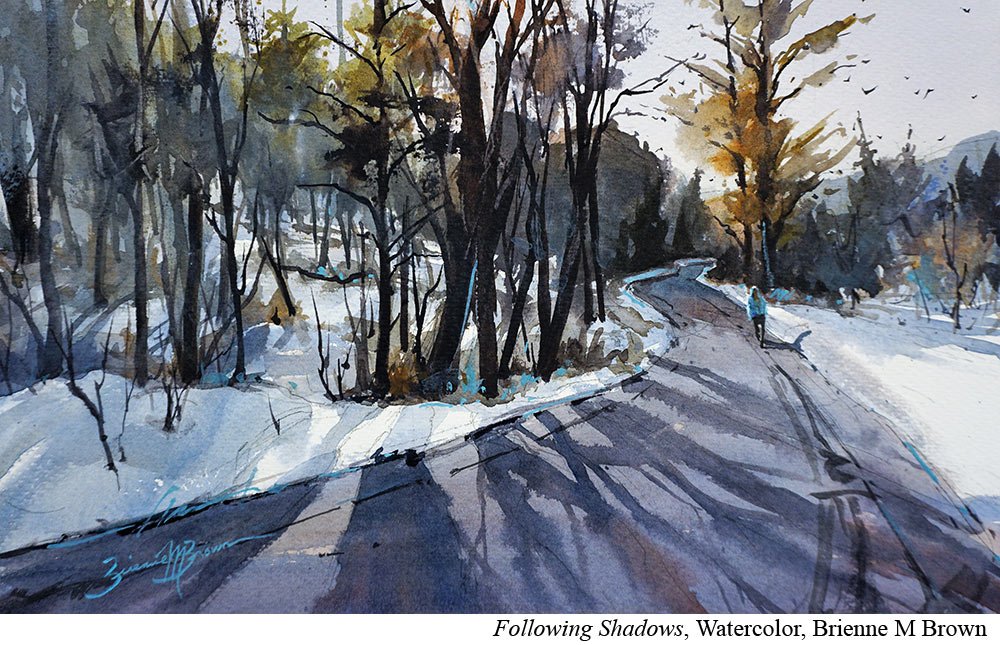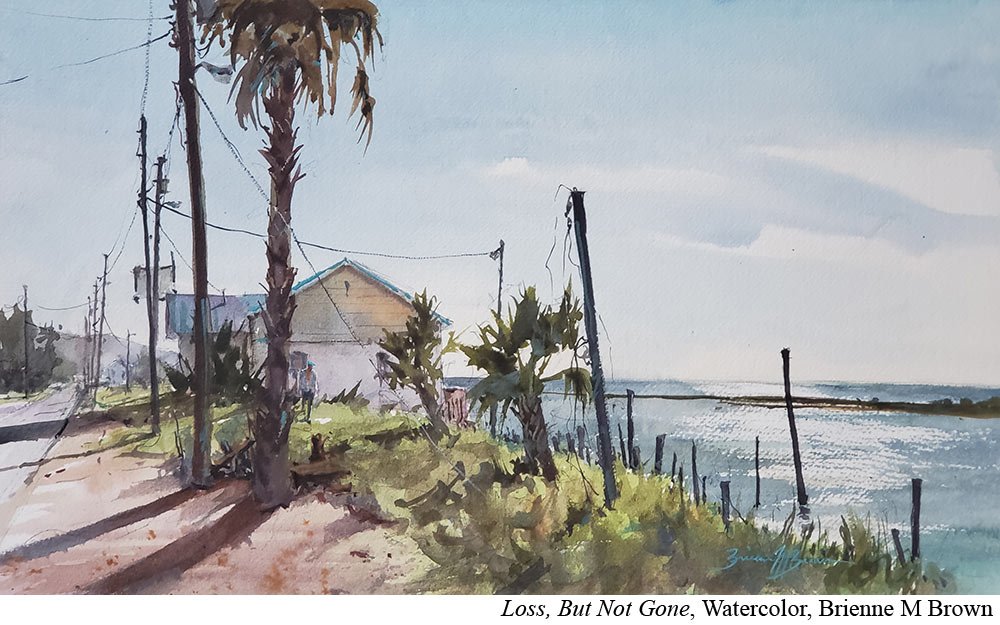Solving the Puzzle: Brienne M Brown Takes on Science, Art and the Great Outdoors
In an alternate universe, artist Brienne M Brown (Ep.46) is a scientist. Probably working in a toxicology lab or in a surgery unit.
“I always loved art. But I never was planning to be an artist as a career,” says Brown.
Art was always part of an identity that included both art AND science. In school she was solving math equations right along her sketchbook sketches. In college, she double majored in chemistry and art.
“ I …never planned on finishing art. And so I just did it because I loved it,“ says Brown.
It wasn’t until graduate school where she found herself, accidentally, only doing the science side of things. Art was nowhere to be seen. And she realized something incredibly important. Something many of us take decades to realize: Art was IMPORTANT. It was important to her well being and happiness. It wasn’t an add on to be forgotten.
“After graduating, I continued to make art priority… because I knew I had to.”
FINDING PLEIN AIR
After the birth of her son and a transition to a fulltime parent, Brown’s art life was as a studio painter.
But in 2009, all of that changed.
She was taking a workshop and the instructor looked at her work and told her if she really wanted to get good, really good, she needed to go outside and paint.
Brown was sold. She loved being outside and if that was the only thing standing between her and being a really good painter (or so said this instructor) why not give it a try?
Brown had been painting over a decade at that point and was absolutely surprised at how difficult the transition to plein air was.
“Plein air…is a skill that needs to be practiced and you're not going to be necessarily great at it to just start,” says Brown.
And in fact, Brown wasn’t.
“I had no clue what I was doing,” she says.
Brown, like all new plein air painters before her, had to learn everything. She had to learn to translate the three dimensional world onto the two dimensional paper. She had to be careful to not accidentally switch perspectives so that her drawing was off. Plus she had to learn the purely technical side of pairing down her painting materials and getting doubles of everything so that her bag was ready to go.
“Plein air…is a skill that needs to be practiced and you're not going to be necessarily great at it to just start,” says Brown.
She also had to learn how to set expectations and work through a process that allowed her to take in the vast complexity of being IN her subject without letting that overwhelm her or rush her to choices that weren’t in the best interest of the work itself.
PLEIN AIR PROCESS
Today when Brown arrives at a site, she puts her bag down and walks around. She doesn’t paint the first pretty thing she sees, she auditions scenes through value studies to see if the shapes will make an appealing painting.
“I try not to think of a subject as a thing,” she says. “I'm not looking for things to paint, I'm looking for shapes to paint. And that's why I can end up painting garbage cans.”
Once Brown has found a place she thinks will make a good painting (tested through value studies) she sets up, does her drawing and lays in her first and lightest wash.
She lets that first wash dry completely and uses the drying time to sketch.
Maybe there are cows nearby and they’d make a great addition to her scene. Maybe she really wants to study how the light - at this moment - is striking the trees. She’s thinking about the space she’s in and the mood it elicits.
When her lights are dry, she goes back in and does wet into wet in areas (she calls these area washes) where she’ll wet a value shape and then work through it wet-into-wet adding her middle value colors.
She works through her entire painting this way.
After her middle values, she then heads to her darkest darks.
“Once I put the darks in the scene, it all makes sense.”
Going into the studio, her process looks similar. The main difference is that when she’s working from a reference or plein air study, she isn’t worried about changing light and can spend more time at each stage.
SETTING EXPECTATIONS
Today, Brown is a professional plein air painter. It’s part of how she makes her living. Plein air competitions fill her yearly calendar.
But she is quick to point out that this is because she is a professional painter. Finished paintings are part of her job. And those finished paintings are not how she encourages her plein air students to get good. It’s not how she got good.
Instead, she encourages her students to approach their plein air paintings not as finished paintings but as studies.
“Don't think I'm going to paint a painting, because then we have this pressure on ourselves, which is not necessary. Because you don't have to produce a painting.” says Brown. “What you're doing is you're studying, you're learning, you're learning from Mother Nature. And that's what you need to do.”
A second approach Brown suggests is setting a time limit and committing to NOT finishing paintings.
For example, commit to being on site for 90 minutes. In that 90 minutes you’ll practice walking around to find a scene, doing value studies and thumbnails, snapping a photo and then starting (but not finishing) a painting. Then you can take that unfinished painting back to your studio and finish the work there with all your preparatory work in hand.)
“You were there for an hour and a half. And you were looking at the same scene, you learned a lot,” says Brown. “And see if that doesn't help by just taking that pressure that you have to go outside and finish something to learn anything. [Because] that's not true.”
And finally, a third approach, Brown suggests, is committing to a manageable time frame for your plein air practice.
“Don't say, I'm going to paint for the rest of my life,” says Brown. “That's too long.”
Brown instead recommends something like three months. Or really whatever is reasonable to you. That’s how Brown approached it, starting out. She committed to painting two plein air paintings a week for three months.
She didn’t hit it perfectly but she did it most weeks. And she ended the three weeks with 24-30 paintings.
“The nice thing is, it's the end of that three month period, I looked at the beginning one, and I looked at the end one, and I saw improvement.” says Brown. “That was really helpful for me, because from any one painting to the next painting, you're not going to see much difference, but you're going to see a difference over time, if you're consistent with it.”
Get articles like this and new podcast episodes sent straight to your inbox by signing up for the newsletter below.

